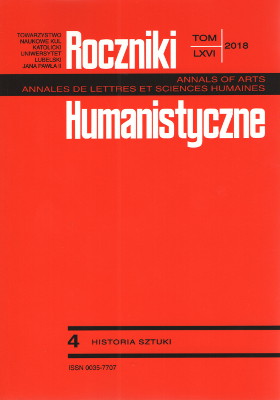Post-Tridentine chasubles presented on permanent exhibition in Diocesan Museum in Siedlce
Post-Tridentine chasubles presented on permanent exhibition in Diocesan Museum in Siedlce
Author(s): Michał MościckiSubject(s): Fine Arts / Performing Arts, Visual Arts
Published by: Towarzystwo Naukowe KUL & Katolicki Uniwersytet Lubelski Jana Pawła II
Keywords: Chasuble; planet; liturgical vestment; fabric; ornament; embroidery; The Trent Council
Summary/Abstract: Chasuble is a decorative outer vestment used by Catholic priests to celebrate Mass. It comes from the Roman paenula, that is a light coat protecting from rain. It was commonly used by Christian priests since the 4th century, and it became a characteristic feature of the priesthood from the 7th century. Over the centuries chasubles were the subject of different modifications. After the Trent Council planets were shortened until the violin shape – these were so-called Roman chasubles. First chasubles had ornamental patterns of the fabrics they were made of. However, Roman paenule had vertical stripes, so-called clavi, which later formed a decorative column sometimes adopting the form of a cross. Chasubles were made from the best silk fabrics. Diocesan Museum in Siedlce has the exhibition of the Post-Tridentine chasubles. The embroidered chasuble from the 17th century is an example of Italian design. The chasubles from the 18th century are came from the Radziwiłł foundation from Biała Podlaska. The first is an example of French embroidery, whereas the second was made in a local manufacture. The red chasuble with the Star of the Order of the White Eagle is a very interesting exhibit, vere rarely decoration of liturgical vestments. The chasuble with the kontusz sash it is the Polish tradition of storage in memory of noble costume. The last example it is the funeral vestment with a very rich embroidery with the Passion of the Christ motifs. Throughout the time we can see a variety of fabrics, techniques and ornamentation methods used in the production of vestments. Each of the examples has its original decorativeness.
Journal: Roczniki Humanistyczne
- Issue Year: 66/2018
- Issue No: 4
- Page Range: 103-114
- Page Count: 12
- Language: English

